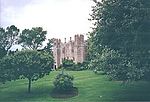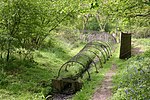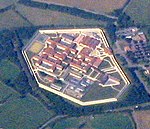Muswell Hill, Buckinghamshire
Geological Conservation Review sitesSites of Special Scientific Interest in Buckinghamshire

Muswell Hill is a 0.2-hectare (0.49-acre) geological Site of Special Scientific Interest north-west of Brill in Buckinghamshire. The local planning authorities are Buckinghamshire County Council and Aylesbury Vale District Council. It is listed by the Joint Nature Conservation Committee as a Geological Conservation Review site.This site has sandstones and sandy ironstones. It is problematic as their precise age and the circumstances of deposition are uncertain, but they are thought to be early Cretaceous, with late Jurassic underlying layers. There is considerable potential for further research on dating the transition between the two periods.
Excerpt from the Wikipedia article Muswell Hill, Buckinghamshire (License: CC BY-SA 3.0, Authors, Images).Muswell Hill, Buckinghamshire
B4011, Cherwell District Piddington
Geographical coordinates (GPS) Address Nearby Places Show on map
Geographical coordinates (GPS)
| Latitude | Longitude |
|---|---|
| N 51.833099 ° | E -1.071889 ° |
Address
B4011
HP18 9UY Cherwell District, Piddington
England, United Kingdom
Open on Google Maps








